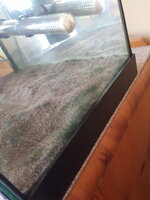It’s believed to be erythromycin
Hi @becks
In that case, my understanding is that it wouldn't be considered legal in the UK as it's an antibiotic.
JPC
It’s believed to be erythromycin
I believe you are correct.In that case, my understanding is that it wouldn't be considered legal in the UK as it's an antibiotic.

If this sounds like random guesswork take note that the Warning on this product is that it may/will ‘Increase Biological Activity’ resulting in an increase in oxygen demand causing available oxygen to fall, it may also adjust the pH. That’s just plain hilarious as this is exactly what happens when you add Manganese into an Alkaline environment, it oxidises (removes O2 from the water column) and adjusts the pH (down).
Yup from the moment of addition unchelated Manganese uses up free Oxygen in the water to form Manganese Oxide and it does this ever readily the higher pH/Alkalinity.
🙂
I think Cyanobacteria sees Manganese like cake and can’t stop eating the stuff if it’s surrounded by it. Like Monty Pythons Monsieur at some point it must reach that final cake.
So it would be good to find a way not just to eliminate this from tanks but to keep it out by creating the environment to prevent it by feeding the tank the elements cyano doesn’t like and limiting the ones it does (or adjust the element to element ratios). Easy Peasy then 😉
🙂

No chance to eliminate spores of the Cyano from the tank, they are abundant on whole Earth, and because of them we can breath using oxygen.




I will add a few more details later today.
